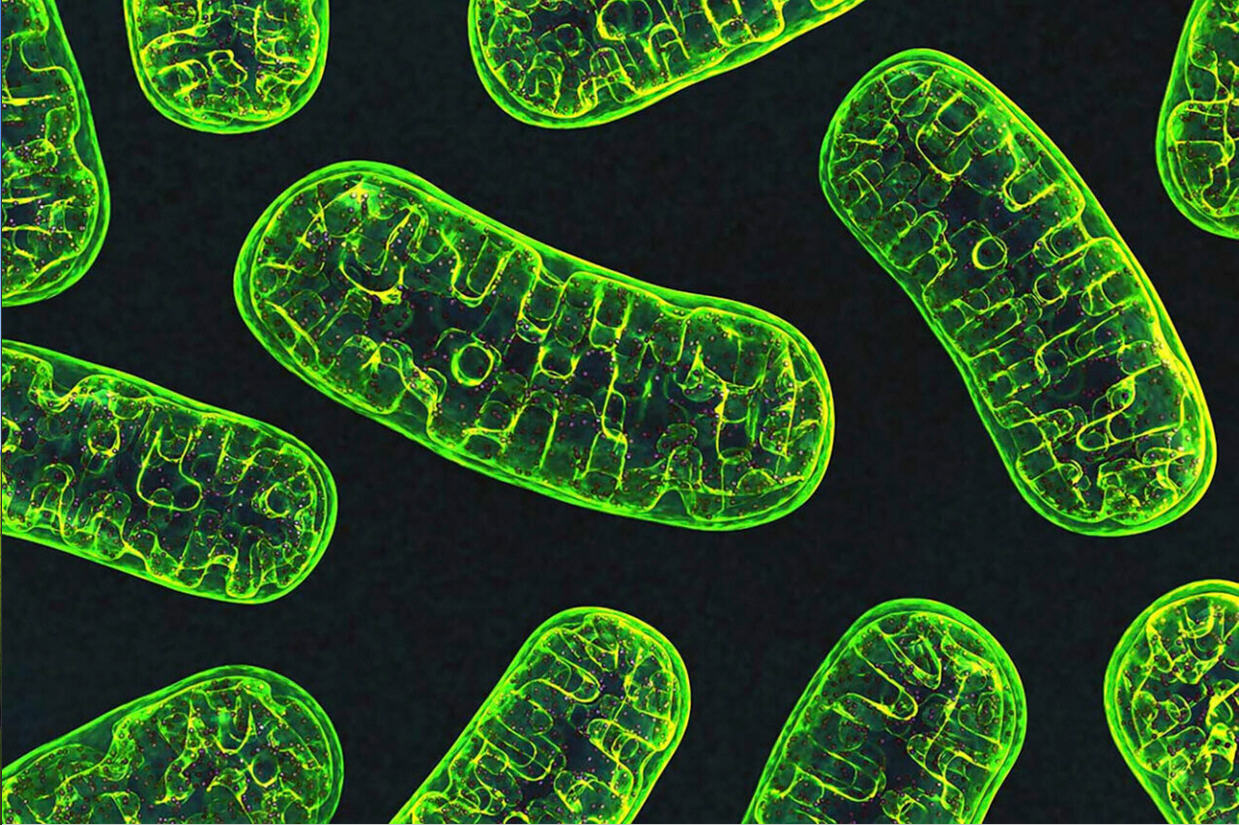博文
细胞“电池”的发现有助于对抗许多疾病
 精选
精选
||
细胞“电池”的发现有助于对抗许多疾病
诸平

据美国弗吉尼亚大学(University of Virginia简称UVA)2021年9月8日提供的消息,弗吉尼亚大学医学院的一位顶级运动研究人员揭示了我们的身体是如何确保细胞的正常运作的。这一发现可能为许多常见疾病的更好治疗打开大门(Discovery about cells' 'batteries' boosts the battle against many diseases),包括阿尔茨海默病(Alzheimer's)和糖尿病。
参与此项研究的除了弗吉尼亚大学医学院(University of Virginia School of Medicine)的研究人员之外,还有来自弗吉尼亚理工学院和州立大学(Virginia Polytechnic Institute and State University)人类营养,食品和运动系(Department of Human Nutrition, Foods, and Exercise)、弗吉尼亚大学凯克细胞成像中心(W. M. Keck Center for Cellular Imaging, University of Virginia)、弗吉尼亚大学生物系(Department of Biology, University of Virginia)、斯坦福大学医学院(Stanford University School of Medicine)、加拿大麦克马斯特大学医学系(Department of Medicine, McMaster University)、英国邓迪大学生命科学学院(School of Life Sciences, University of Dundee)、麦克马斯特大学生物化学和生物医学科学系(Department of Biochemistry and Biomedical Sciences, McMaster University)的研究人员。相关研究结果于2021年9月7日已经在《美国科学院院刊》(Proceedings of the National Academy of Sciences简称PNAS)网站发表——Joshua C. Drake, Rebecca J. Wilson, Rhianna C. Laker, Yuntian Guan, Hannah R. Spaulding, Anna S. Nichenko, Wenqing Shen, Huayu Shang, Maya V. Dorn, Kian Huang, Mei Zhang, Aloka B. Bandara, Matthew H. Brisendine, Jennifer A. Kashatus, Poonam R. Sharma, Alexander Young, Jitendra Gautam, Ruofan Cao, Horst Wallrabe, Paul A. Chang, Michael Wong, Eric M. Desjardins, Simon A. Hawley, George J. Christ, David F. Kashatus, Clint L. Miller, Matthew J. Wolf, Ammasi Periasamy, Gregory R. Steinberg, D. Grahame Hardie, Zhen Yan. Mitochondria-localized AMPK responds to local energetics and contributes to exercise and energetic stress-induced mitophagy. Proceedings of the National Academy of Sciences, September 14, 2021; 118 (37): e2025932118. DOI: 10.1073/pnas.2025932118. Published September 7, 2021. http://www.pnas.org/content/118/37/e2025932118
弗吉尼亚大学的闫震(Zhen Yan音译)及其同事的这项新研究揭示了我们的细胞是如何感知问题并对细胞“电池”——线粒体(mitochondria)进行质量控制的。闫震多年来一直在寻求更好地理解线粒体的工作原理,他称这一新发现是他职业生涯中最令人兴奋的。
UVA的罗伯特·伯尔尼心血管研究中心骨骼肌研究中心(Center for Skeletal Muscle Research at UVA's Robert M. Berne Cardiovascular Research Center)主任闫震说:“对我来说,线粒体就是宇宙的中心,因为我们身体所有的细胞都在依靠线粒体来产生能源,而且必须有一个防弹系统确保能源生产能够正常运作。由细胞中的线粒体问题而导致的慢性疾病,也被称为非传染性疾病(noncommunicable diseases),如糖尿病、心力衰竭和阿尔茨海默病,这些疾病对许多个人、家庭和整个社会造成了灾难性的影响。
压力检测器(Stress detectors)
闫震和他的团队在小鼠和人类不同组织的线粒体外膜上发现了特殊的传感器。这些传感器检测“能量压力(energetic stress)”,比如由运动或禁食(exercise or fasting)引起的压力,并发出受损线粒体被降解和移除的信号。这种必不可少的清理过程被称为“自噬(mitophagy)”,它的存在最早是在100多年前提出的。但它的工作原理一直未被完全理解。闫震的新研究提供了长期寻求的答案。
闫震和他的同事发现,被称为“mitoAMPK”的线粒体传感器(mitochondrial sensors)在不同的组织中以略微不同的形式存在。例如,有一种类型似乎在骨骼肌(skeletal muscle)中特别活跃。在一篇概述他们发现的新科学论文中,研究人员将传感器的多样性描述为“出乎意料的复杂(unexpectedly complex)”。他们接着概述了这些传感器如何提供一个至关重要的损害控制系统,以保护我们的细胞能量供应。
这项研究的一个发现让闫震感到非常兴奋:用最有效的一线抗糖尿病药物二甲双胍(metformin)治疗小鼠,可以激活骨骼肌中的mitoAMPK,而不激活细胞其他部分中的AMPK。这一发现最好地说明了激活mitoAMPK和线粒体质量控制在治疗一种常见慢性疾病中的重要性。众所周知,这种疾病是由我们体内功能失调的线粒体积累引起的。这也解释了为什么定期锻炼对预防和治疗此类疾病如此有效。
对线粒体质量控制的新认识将促进努力开发新的治疗非传染性疾病的方法,这些疾病已达到流行病的程度,估计造成了所有死亡的71%。
闫震是弗吉尼亚大学心血管医学部(UVA's Division of Cardiovascular Medicine)的一员,他说,医生更好地了解特定疾病是如何干扰线粒体功能的,这将是很重要的。他的新发现为这一研究奠定了基础。
闫震说:“我们已经开发了基因模型来确定mitoAMPK激活的关键步骤,并且正在我们的研究道路上发现由mitoAMPK控制的神奇分子。这些发现让我们了解了人体内传感器系统的美丽之处。社会应该充分利用这些发现,促进定期锻炼以促进健康和疾病预防,并开发有效的运动类药物。”
上述介绍,仅供参考。欲了解更多信息,敬请注意浏览原文或者相关报道。
Here, we present unequivocal evidence of physical association of AMPK holoenzymes with mitochondrial reticulum (mitoAMPK) across multiple mouse tissues with evidence of conservation in human skeletal muscle and heart. We demonstrate that mitoAMPK is activated heterogeneously across the mitochondrial reticulum by mitochondrial energetic stress. Finally, we present evidence that suggests activation of mitoAMPK in skeletal muscle is required for mitophagy. We propose that mitoAMPK responds to mitochondrial microenvironment cues to maintain energetic homeostasis through mitochondrial quality control.
Mitochondria form a complex, interconnected reticulum that is maintained through coordination among biogenesis, dynamic fission, and fusion and mitophagy, which are initiated in response to various cues to maintain energetic homeostasis. These cellular events, which make up mitochondrial quality control, act with remarkable spatial precision, but what governs such spatial specificity is poorly understood. Herein, we demonstrate that specific isoforms of the cellular bioenergetic sensor, 5′ AMP-activated protein kinase (AMPKα1/α2/β2/γ1), are localized on the outer mitochondrial membrane, referred to as mitoAMPK, in various tissues in mice and humans. Activation of mitoAMPK varies across the reticulum in response to energetic stress, and inhibition of mitoAMPK activity attenuates exercise-induced mitophagy in skeletal muscle in vivo. Discovery of a mitochondrial pool of AMPK and its local importance for mitochondrial quality control underscores the complexity of sensing cellular energetics in vivo that has implications for targeting mitochondrial energetics for disease treatment.
https://blog.sciencenet.cn/blog-212210-1303555.html
上一篇:研究人员在室温下实现自旋场效应晶体管
下一篇:2021年搞笑诺贝尔奖揭晓